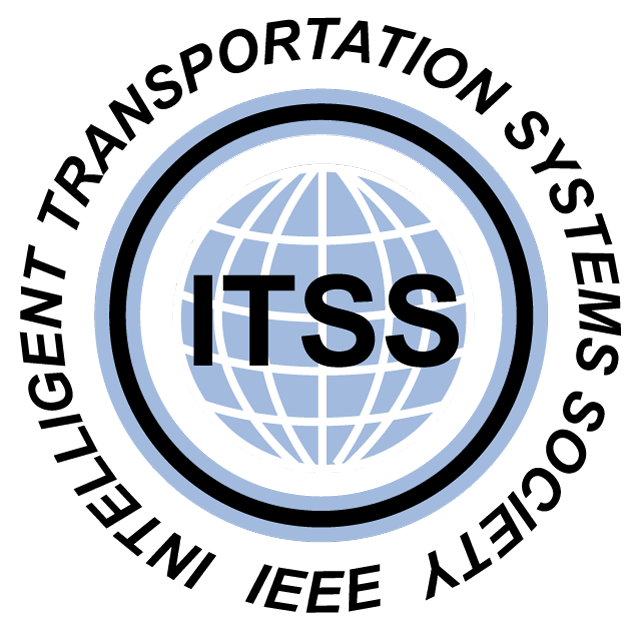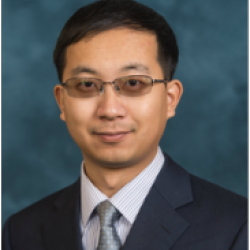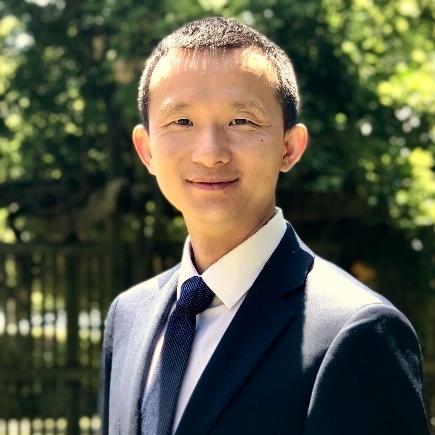Workshop Agenda
Following talks were given within a half-day workshop session on Sunday, Sep. 20, 2020.
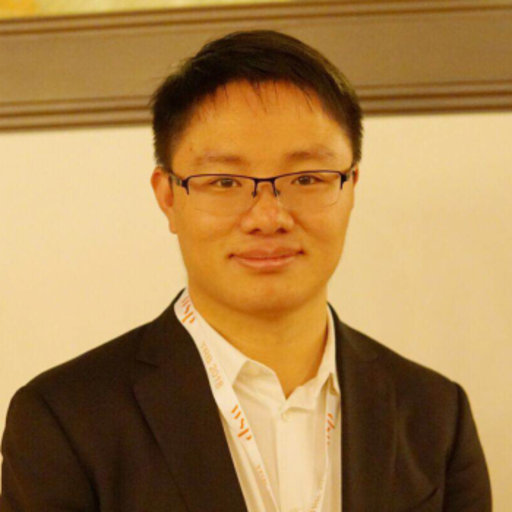 Shuo Feng
Shuo Feng
Autonomous Vehicles Safety Assessment Simulation (ASAS) Platform Based on SUMO and CARLA
Simulation-based safety assessment is a critical step in testing and evaluation of autonomous vehicles (AVs).
To assess AVs’ safety performance accurately, we developed a simulation platform based on SUMO and CARLA.
CARLA provides realistic inputs to AVs’ sensors such as photorealistic images that resemble real-world renderings,
while SUMO generates the background vehicles (BVs) interacting with the AVs. Different from existing SUMO-based simulation
models, we developed new stochastic human driving models, which can create naturalistic behavioral patterns of human drivers.
Comparing with most existing models, which are deterministic and mainly calibrated for normal driving conditions,
the new models can resemble safety-critical scenarios, which are critical for safety assessment of AVs.
 Seyhan Uçar
Seyhan Uçar
Cooperative Anomalous Driving Behavior Detection and Management
Traditional traffic law enforcement and control measures, such as police force efforts and insurance repercussions, are relatively effective at addressing
serious anomalous driving behavior, i.e., through fines, penalties and in worst cases, criminal charges. However, small scale anomalous driving behavior
who are engaged in Aggressive/Distracted/Reckless (ADR) driving is more difficult for the traditional enforcement infrastructure to detect, much less address.
Detection of such ADR driving behavior is important, otherwise, it may jeopardize the safety of other vehicles as well as the efficiency of the transportation
system. In this talk, I will introduce the cooperative anomalous driving behavior detection and management system. The system leverages vehicles’ onboard
resources to determine a measure of the effect that the ADR behavior has had on other vehicles and generates control instruction(s) to mitigate the negative
effect of abnormal drivers. A hierarchical edge computing architecture is designed to enable cooperative anomalous driving behavior detection and management
system at the city-scale and its benefit is shown through large scale simulations performed in AIMSUN.
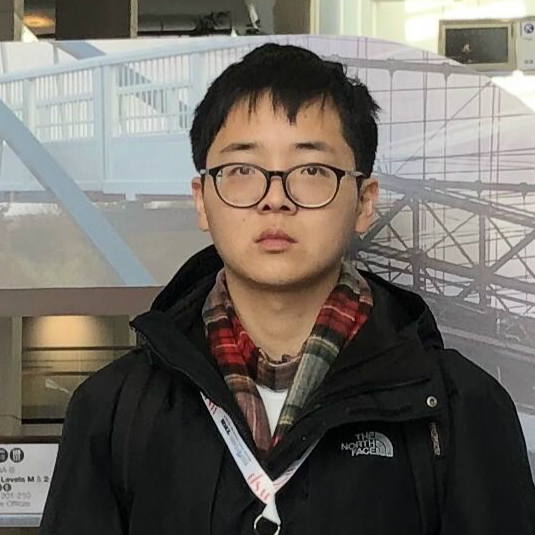 Mingyuan Yang
Mingyuan Yang
Quantifying the Environmental Benefits of Capacity Enhancing Traffic Management Strategies using AIMSUN Simulation
The future of transportation with connected and automated vehicles presents challenges and opportunities in traffic management.
In the near future, vehicles will be equipped with Cooperative Adaptive Cruise Control (CACC) to allow them travel safely with
short headway at higher speeds, hence achieving higher capacity, alleviating congestion, and improving fuel economy. However,
similar issues such as bottlenecks caused by frequent merges from freeway entrances will diminish the freeway capacity and the
fuel economy benefit of connected and automated vehicles. Traffic management strategies such as freeway ramp metering and variable
speed advisory have been commonly used to enhance freeway capacity and reduce delay at bottlenecks near merging on-ramps. This
study explored the potential benefit of implementing ramp metering and variable speed advisory on freeways with varying market
penetrations of CACC vehicles using a case study of a 13-mile freeway corridor in Sacramento, California. Simulation analysis
of detailed vehicle trajectory data that precisely capture the stop-and-go waves associated with freeway merge bottlenecks has
demonstrated that ramp metering and variable speed advisory can improve fuel economy by as much as 20%, and the improvement is
especially significant at higher market penetrations of CACC.
 David Florence
David Florence
Traffic Optimization for Signalized Corridors (TOSCo) Development and Evaluation with VISSIM
The Traffic Optimization for Signalized Corridors (TOSCo) system is a vehicle-to-infrastructure connected vehicle
application that uses level one autonomy to adjust a vehicle’s speed on the approach of a signalized intersection.
The system uses information from the infrastructure’s DSRC broadcasts to plan a speed trajectory that allows it to
either pass through the intersection without stopping or stop in a smooth, coordinated fashion to reduce the amount
of time stopped at the intersection. This presentation will explain the simulation setup for developing and testing
the TOSCo vehicle algorithm as well as the simulations for evaluating TOSCo performance for a corridor.
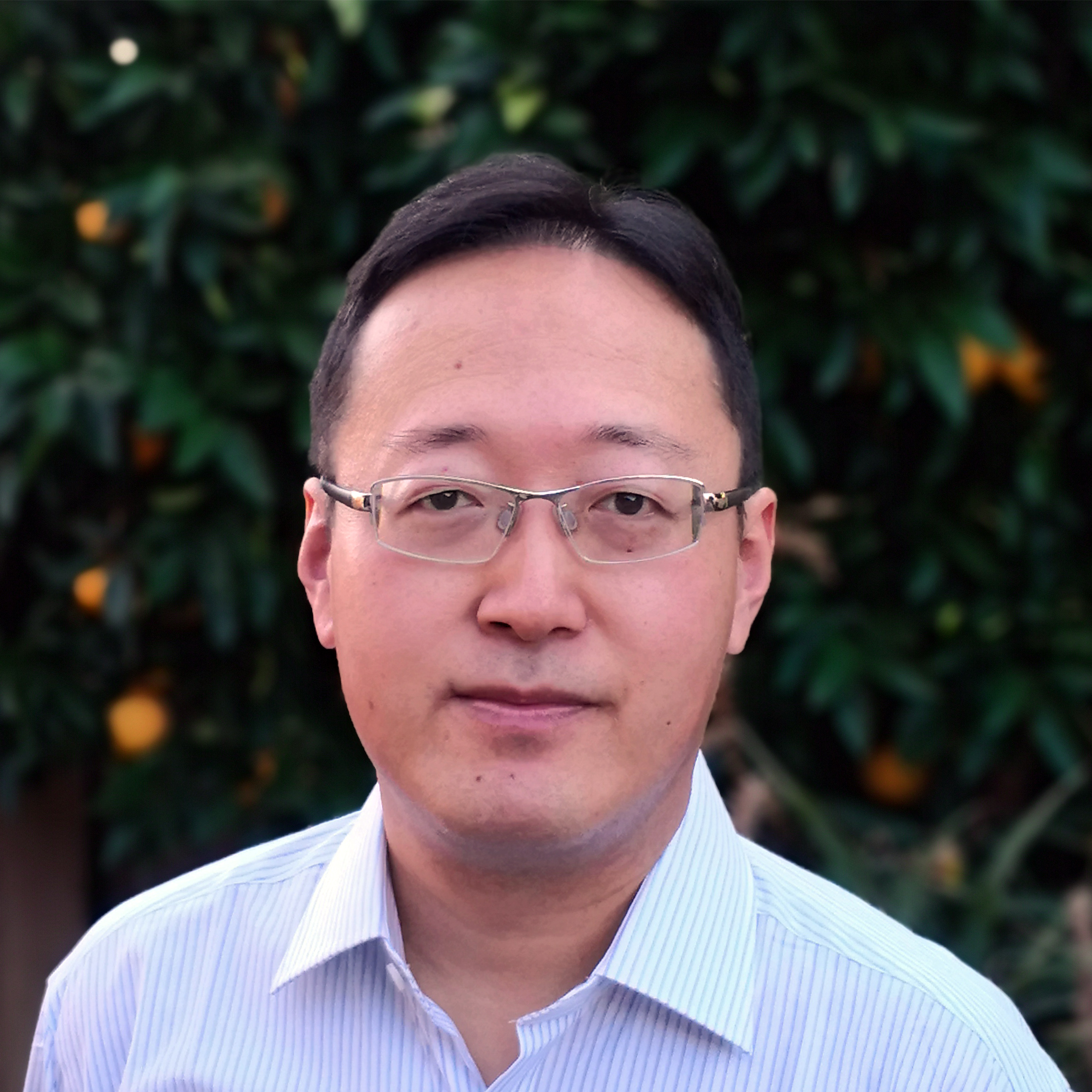 Guodong Rong
Guodong Rong
LGSVL Simulator: A High Fidelity Simulator for Autonomous Driving
Testing autonomous driving algorithms on real autonomous vehicles is extremely costly and many researchers
and developers in the field cannot afford a real car and the corresponding sensors.
Although several free and open-source autonomous driving stacks, such as Autoware and Apollo are available,
choices of open-source simulators to use with them are limited. In this paper,
we introduce the LGSVL Simulator which is a high fidelity simulator for autonomous driving.
The simulator engine provides end-to-end, full-stack simulation which is ready to be hooked up to Autoware and Apollo.
In addition, simulator tools are provided with the core simulation engine which allow users to easily customize sensors,
create new types of controllable objects, replace some modules in the core simulator, and create digital twins of particular environments.
 Dean Deter
Dean Deter
Connected and Automated Vehicles: Major Shifts in Vehicle R&D Methods
Rapid advancement in vehicle computing technology, connectivity, controls, and autonomous operation of advanced
vehicles has increased the difficulty of testing and modeling systems that control vehicles and traffic. Much
of the challenge stems from the complexity of the new system-of-systems approach required to manage connected
and autonomous vehicles and vehicles equipped with advanced driver-assistance systems as they interact with other
vehicles, surrounding environments, and larger traffic networks. This talk will discuss some of the simulation
and hardware-in-the-loop approaches ORNL and partners are using to develop and combine new and old methods to
conduct research across these areas.
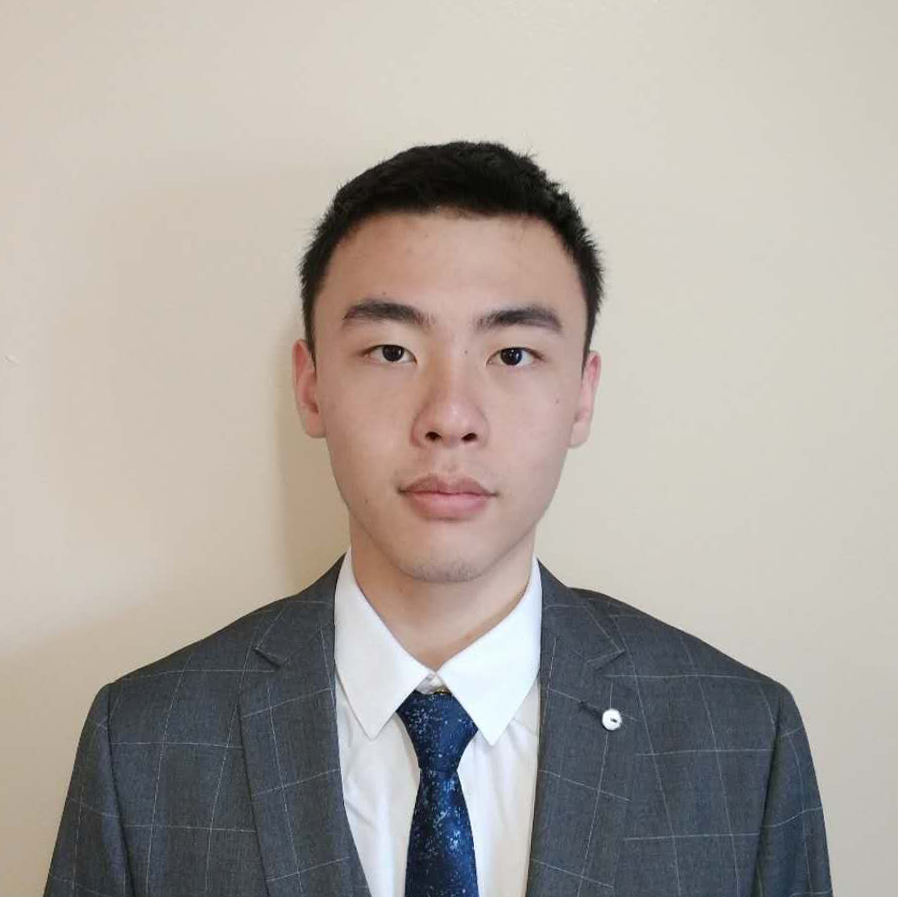 Xuanpeng Zhao
Xuanpeng Zhao
Modeling and Evaluation of Autonomous Vehicles in Mixed Traffic using an Integrated SUMO-Unity Platform
With the increasing penetration rate of autonomous vehicles, the research need related to mixed traffic is increasing.
To provide an easier way to test autonomous algorithms in a mixed traffic scenario,
we develop an integrated SUMO-Unity platform. The platform creates user-controlled
and NPC vehicles in Unity based on the traffic flow generated from SUMO.
The traffic flow recreated in Unity can react to the user-controlled
vehicles based on the basic car-following model and lane-change model.
The user-controlled vehicles therefore can be put into a virtual transportation network by applying real-time traffic simulation.
 Ping Wang
Ping Wang
Learning Adaptable Policy via Meta-Adversarial Inverse Reinforcement Learning for Decision-making Tasks
Learning from demonstrations has gained popularity in learning policies directly from expert behaviors
for decision-making and control tasks. Some state-of-the-art methods include Imitation Learning (IL),
Inverse Reinforcement Learning (IRL), Generative Adversarial Imitation Learning (GAIL), Adversarial
Inverse Reinforcement Learning (AIRL). It does not require a reward function that is hard to be manually
designed especially for complex tasks, but it generally needs abundant of demonstrations to gain the
ability of mimicking expert behaviors. Furthermore, the learned behavior usually works only in that
specific task environment and fails to generalize to new tasks with different distributions. In reality,
it is usually the case that we continuously enrich the data set by collecting new data from new tasks or
environments. For example, to learn an automated lane-change behavior, we may train our vehicle agent with
thousands or even millions of labeled driving demonstrations from different cities or countries, but these
demonstrations may not cover all the possible situations and we may still have new data obtained from other
cities or countries that are not originally included in our training data set. In this situation, it is labor
intensive and cost expensive to keep labeling all the newly acquired data and retrain the model from scratch again.
Therefore, it is essential to have a model that can make good use of the knowledge learned from existing tasks and
generalize quickly to new tasks with limited or even unlabeled data samples. Meta-learning is an approach to adapt
learned models to novel settings by exploiting the inherent35learning similarities across a distribution of tasks.
In this work, we combine Adversarial Inverse Reinforcement Learning and Meta-learning to learn the model initialization
that can be quickly fine-tuned and adapted to new situations with limited data. We then apply the proposed method to
complex decision-making tasks in autonomous vehicles.
 Hao Yang
Hao Yang
Anomaly Behavior Management: Reducing the Impact of Anomalous Drivers with Connected Vehicles
Passenger vehicles operated by anomalous drivers, who are distracted on roads and perform errorable driving behaviors,
result in increased risk of collisions to themselves and their surrounding vehicles. Eliminating the impact of anomalous
drivers to the surrounding vehicles is very critical to improve driving safety. In this study, an anomaly management system
is developed with the help of connected vehicles to solve the problem. An errorable car-following model is applied to model
the dynamics of anomalous vehicles and to analyze their impacts to other vehicles. The system utilizes connected vehicles to
monitor the errorable behaviors of the anomaly drivers and estimates acceleration and lane changing advice for connected vehicles
to avoid dangerous behaviors. In addition, a hierarchical architecture is integrated with the proposed system to reduce the risk
of collision caused by anomaly vehicles in large-scale road networks. A microscopic traffic simulation is applied to evaluate the
benefits of the proposed system on reducing the risk of collisions and improving mobility for both connected vehicles and whole
networks. In addition, a sensitivity analysis of market penetration rates of connected vehicles and traffic demand levels will be
conducted to understand the reliability of the system at different development stages of connected vehicles and traffic congestion.
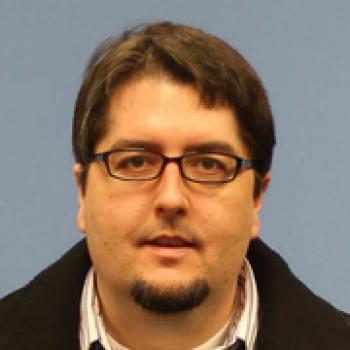 Joshua A. Auld
Joshua A. Auld
Modeling the Impacts of Future Mobility Technologies using the POLARIS SMART Mobility Workflow
Recent advances in vehicle technologies, mobility services and transportation system management have the potential to fundamentally change
the way transportation is provided and used in the near future. Technologies such as connectivity, both between vehicles and with infrastructure,
and automation have the ability to allow vehicles to travel more efficiently, safely and economically, and enable new forms of mobility to emerge.
However, recent studies have also shown that there is the potential for these new technologies to drastically alter the way individuals travel
leading to increases in congestions, energy use, emissions and so on, in some scenarios. Different vehicle and transportation technologies
interact in complex ways with the transportation system as a whole and with individual travel behavior. In order to understand these complex
interactions and evaluate the potential benefits of future mobility technologies, the SMART Mobility modeling workflow was recently developed.
This workflow seeks to evaluate new transportation technologies such as connectivity, automation, sharing, and electrification using multi-level
simulation analysis that captures interactions between technologies and travelers. The workflow is centered around the POLARIS agent-based
activity-travel demand simulation tool, and integrates through multiple other models at different levels of scale and resolution (i.e. individual
vehicle simulations, connected vehicle simulations in traffic microsimulation, long-term land use simulation) to gain insights about the influence
of new mobility and vehicle technologies at the system level.
Workshop Organizers

